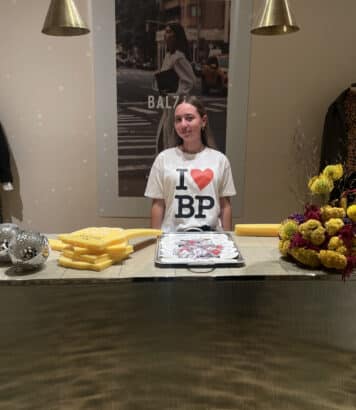Tina Barney: the American bourgeoisie at the Jeu de Paume

Until January 19, 2025, the Jeu de Paume in Paris is devoting an exhibition to the American photographer Tina Barney. With her portraits of the American bourgeoisie and European aristocracy, Barney has been capturing images of high society since the 1980s.
Having herself come from this milieu, she observes her subjects with an intimacy that makes her photos a visual archive of these often inaccessible elites.
An exploration of the American bourgeoisie
Tina Barney, born in 1945 in New York, grew up in the hushed world of Manhattan’s Upper East Side. The daughter of a family that collected works of art such as those by Renoir and Degas, she discovered the visual richness of bourgeois interiors at an early age. It wasn’t until she was thirty that she took up photography, inspired by her collection of shots by Robert Frank, Lee Friedlander and Walker Evans. ” Collecting was probably the best learning tool I could have dreamed of,” she confides, explaining how observing the masters of photography shaped her eye.
Her career began with portraits of her own family and close circle. She captures everyday scenes, family moments in lavish settings, revealing the simplicity of everyday gestures within luxurious surroundings. This approach is reminiscent of Nan Goldin‘s, although Barney distinguishes herself through a more controlled technique and formal framework. Over the years, she immortalizes her sister, mother and friends from this social circle, maintaining a raw authenticity and an absence of staging.
Theatre of Manners: a direct approach
In 1983, after a divorce, Tina Barney gave up her Pentax camera for a larger view camera. This new equipment enabled her to compose images in the manner of a painter at his easel, adding formality to her approach. The portraits of this period, grouped together under the title Theatre of Manners, show the American bourgeoisie in its everyday life, without criticism or irony. In The Young Men (1992), three men exchange glances that evoke the codified behavior of high society.
“I always take hundreds of photos before I’m satisfied with the result of at least one of them,” explains Barney, who captures the essence of her subjects by capturing their subtle, gestural interactions. Works such as Sunday New York Times and In the Garden (1982) bear witness to this meticulousness and his interest in the social codes of his milieu.
European aristocracy and the weight of history
In the 2000s, Tina Barney extended her field of exploration to Europe, where she photographed the continental aristocracy for her series The Europeans. This project reveals dynamics that differ from those of American high society: “In Europe, everything was more formal and reserved than the families and friends I photographed in the United States,” she recalls. In these portraits, the subjects’ attitudes, inherited from previous generations, are almost frozen in time. They evoke a visual tradition marked by centuries of history.
This series introduces a heightened slowness and formality to its process, as evidenced by the portraits of aristocratic families surrounded by historic artworks and furnishings. Julianne Moore, for example, is captured in an interior that makes her comparable to a Renoir painting.
A look that evolves over time
Criticism of Tina Barney’s work has evolved over the decades. If her photos of the ’80s and ’90s were perceived as cold and distant, they are now seen with a certain gentleness, a familiarity developed by widespread access to diverse milieus via social networks. “Observing the interior and habits of another social class is no longer so unusual,” notes Barney, analyzing the transformation of public perception in the Internet age.
Heritage and fragility
A recurring motif in Tina Barney’s work is the empty space left in the bottom corner of her photos, devoid of figures or decoration. For her, this space symbolizes the precariousness of social stability. “In my photographs, the question of heritage arises. And my answer would be to appreciate every moment, to save every memory. Because what we possess today can disappear tomorrow.” Barney thus captures not only images of his social milieu, but also the fragility of this universe.
“Tina Barney. Family Ties”, at the Jeu de paume, Paris, until January 19, 2025.
Also read: Martha Stewart: America’s perfect woman turned criminal, on Netflix




